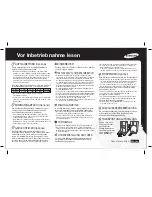
Freezing foods / storing frozen foods
Page GB-21
– are stacked above the stipulated high-
load marker.
– partially clumped (particularly easy to
identify with berries and vegetables).
– have snow and juice traces.
• Transport frozen foods in special styro-
foam boxes or insulated bags.
• Observe the storage conditions and stor-
age times on the packaging.
• You can store frozen goods in the entire
freezer compartment.
Defrosting food
Observe the following basic rules when de-
frosting food:
• To defrost food, remove it from the freezer
and let it defrost at room temperature or
in the refrigerator.
• To defrost food quickly, use the defrost
function on your microwave, for example.
Observe the manufacturer’s instructions
and note that bacteria and germs can form
in this way.
• Cook or use thawed foods as soon as
possible.
• Dispose of the defrosting liquid.
• If you only want to defrost part of a pack,
remove the portion you need and imme-
diately close the rest of the pack. In this
way, you will avoid “freezer burn” and will
reduce ice formation on the remaining
foods.
• Always defrost meat, poultry and fish in
the refrigerator. Make sure that the frozen
food is not immersed in its own thawing
liquid.
Cook or use thawed foods as soon as
possible. Dispose of the defrosting liq-
uid.
Summary of Contents for HSBS17990WEA1S
Page 50: ......
















































